Off a busy street in Cape Town, in a space that was once a bar and church, Francis MacDonnell tells her story with righteous anger. “I always tell people, ‘I can’t change the past’,” she says. “So always tell your story with a smile.” But there’s a storm within her.
It’s here at District Six Museum, in the middle of one of Africa’s most developed cities, that one can learn of the region’s dark past. Some 60,000 “non-whites” were systematically removed from District Six over a period of more than 10 years, by an apartheid government in the 1960s and 1970s determined to remove evidence of a thriving mixed-race neighbourhood. MacDonnell gives a devastating account of life in the ill-fated suburb where she grew up, and the destruction that was caused.
These days, although Cape Town’s borders have expanded over time, there is still a clearing where once the citizens of District Six thrived. Grass grows over rubble, dolls like one MacDonnell cherished as a kid lie on the ground, and the faint memory of a road structure remains. For those acquainting themselves with the Capetonian psyche, District Six is an important place to visit.
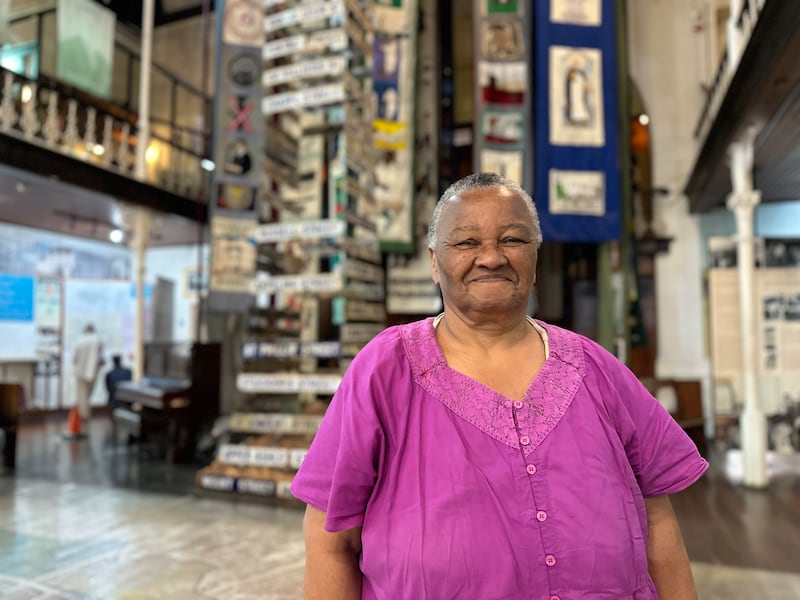
South Africa is a land carved by its scars. Although apartheid ended more than 30 years ago, fences delineate the wide gap between rich and poor: there are spiked fences, electric fences and fences guarded by black security guards under the employment of white people within. It’s a jarring sight.
RM Block
Since the first democratically elected government came into power in 1994, wealth inequality has not declined: the top 10 per cent own 85 per cent of the wealth, while the bottom 50 per cent are net debtors. One in three people are unemployed, a staggering number for Africa’s most industrialised country with its largest GDP. Robbery and assault rates are high. Its citizens increasingly fear walking alone.
That the country functions – and in some areas flourishes – is a testament to its warm and resilient people, and the raw beauty of the terrain.
I’m visiting Cape Town with family, during summertime in the southern hemisphere. Ours is a trip oscillating between social visits in the mainly white suburbs and the city’s tourist attractions.
It’s expensive to get here, but cheap when you arrive. Turkish Airlines flights from Dublin to Cape Town via Istanbul set me back €842. That jolt is softened by the price of goods: one restaurant meal for four – with wine and desserts – costs about 600 ZAR (€30).
While on a visit to one of Cape Town’s many townships, I meet a man who has worked as an airport porter for almost 20 years. His pay? Nothing, he tells us. He survives on tips alone.
For those fortunate enough to afford the journey, Cape Town and its surrounding areas have a seemingly endless number of things to see and do. Two weeks barely feels like enough time.
The city is flanked by Table Mountain, a steep and beautiful watcher over the city. There are several ways to hike it, and debating each route’s merits appears a competitive pastime among locals. We opt for Platteklip Gorge, which is a 1.5km walk from the Aerial Cableway. A guide talks us through our route before we head up.
Every step is steep, upon jagged rocks along the way, but the views are spectacular, and there’s a helpful camaraderie among hikers. The crosswind on top is something to anticipate and I’m glad of my jacket. Watch out for the “tablecloth”, the affectionate name for the layer of cloud that regularly obscures the top of the mountain. That’ll spoil the view.
I catch the cableway down, which rotates slowly to give everyone an equal view. If you’re hanging around for fellow hikers like I am, a beer at Tap overlooking the city is just the ticket.
Kirstenbosch Unesco World Heritage Site, at the foothills of Table Mountain, costs 200 ZAR per adult (€10.40) and is well worth the trek. Meandering paths guide you through curated gardens where some of the country’s most beautiful plants grow. A highlight is the Boomslang Canopy walkway, high above the trees, which offers stunning views. It’s a beautiful spot for family excursions or romantic strolls, so much so that we stumble upon a (successful) proposal by a young man to his partner.
Curiously, the gardens were based on the vision of an Irish man, Henry Harold Pearson, in the early 20th century. Though born in England, the Trinity-educated botanist always felt a closer connection to the home of his emigrant parents.
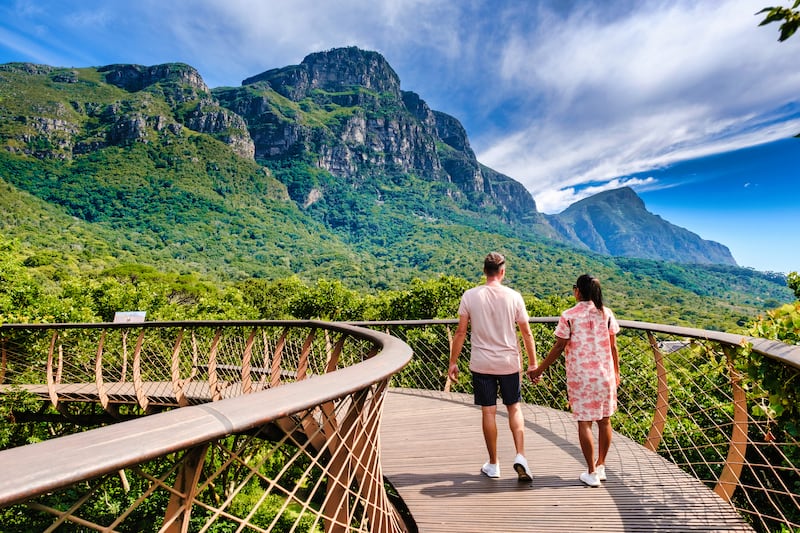
As a city dominated by cars, a bus tour is a handy and safe way to get your bearings. Pick your time wisely, as city traffic can get chock-a-block. The lack of pedestrians, though, is striking. Vehicles clog up the streets and we travel at a snail’s pace, but there’s few people walking around – especially white people.
Once you’re in the city, the V&A Waterfront (named after Queen Victoria and her son Alfred) is a safe shopping district filled with trinkets to bring back home. One woman, for example, is selling figurines made with recycled flip flops and jewellery made with can lids. “My sister makes them, I sell them,” she says. Across a few mixed-use warehouses are modern shops, cafes and offices reflecting a Cape Town that has sought for more than 35 years to redevelop its docklands.

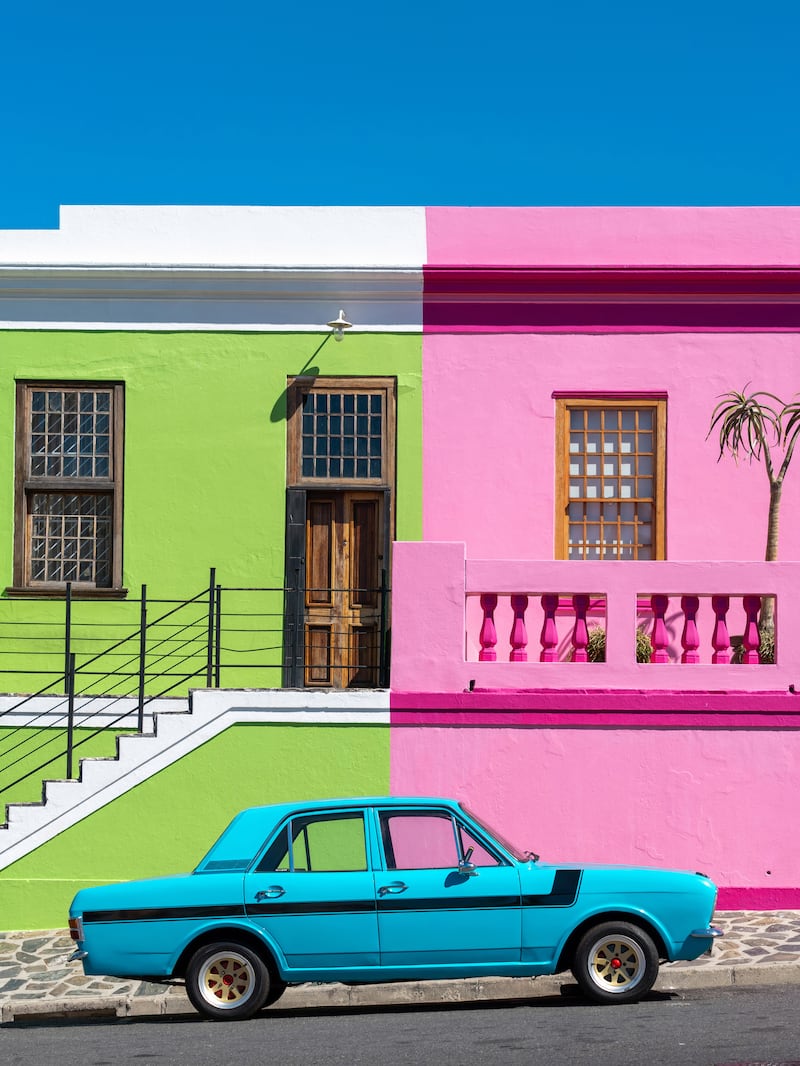
TimeOut Market, owned by the eponymous media and hospitality group, is a foodie’s dream. Located in an old power station along the waterfront, the market has stalls featuring all sorts of cuisines: South African grill, Cape Malay, modern Japanese, sandwiches, American, Italian and a couple of bars for good measure. With its industrial feel, it reminds me of Andy Warhol’s Factory – and of course, there’s artwork paying homage to the artist on the wall. It’s safe, with security guards at every entrance, and generously staffed. I try some chicken sosatie, a Cape Malay speciality, which consists of sweet chicken and veg in a light and mildly spiced batter, with a Roti bread roll. Heaven for just 90 ZAR (€4.60).
Two Oceans Aquarium is around the corner, featuring sea creatures from across Africa’s oceans and shores. Hundreds of clownfish group together along the sand, luminous fish from the depths light up a dark exhibit and an ocean exhibit shows off the larger ones: stingrays, sea turtles and all sorts of tropical fish. There are some gnarly Rockhopper penguins too, each with their own names. Favourites include Wallace, Gromit and Miss Harold Custard.
Nearby we visit Ferryman’s Irish pub in the hope of watching an Ireland rugby game, but staff refuse to switch channels from the local Stormers game. There may be a Bantry Bay in Cape Town, but it’s still a far cry from home. An English man who overhears our dilemma gestures at the Scottish pub next door. We stroll in and, to our surprise, find a small army of green jerseys glued to the Ireland game. We share a moment of laughter, similarly flummoxed by the situation.
Always to the forefront, however, is the constant reminder of who is serving, and who is being served. Hospitality is well-staffed because labour is cheap, leaving customers well attended. But remuneration is low.
Racial inequality runs deep in South Africa, and the echoes of apartheid still linger. You needn’t look far. At Bo-Kaap, the city’s oldest surviving residential neighbourhood, a rainbow of houses brings life to a once grey quarter. It was here that slaves from Malaysia, Indonesia and India were housed during colonial times. More than 200 years later the area remains a mixing pot of South Asian cultures and Islamic traditions.


We visit Bo-Kaap Cultural Hub for a history of the area and, following a staff recommendation, stop for lunch in Biesmiellah Restaurant, a shining example of Cape Malay cuisine. Wageeda Williams serves us traditional bobotie: delicious curried beef, rice, egg and fresh herbs. It’s not long before we get our hands on a cookbook to bring home.
If you’re looking something less adventurous, a fish and chip dinner at Fish on the Rocks, in Cape Town’s multicultural melting pot of Hout Bay, is a must-do. Locals have voted it their favourite chipper in the bay.
A guide from one of the area’s townships takes us kayaking in the bay, where dolphins breach the surface around us. We also drive up Chapman’s Peak, a nearby mountain pass overlooking the bay, and watch the sunset. In such moments, the beauty of the environment makes you catch your breath: it’s a phenomenal country.
To cap off our visit, we take the foot off the pedal and visit Franschoek Valley (French corner, in Afrikaans), a popular destination for tourists. When French Huguenots fled persecution in the 17th century, 300 of them were given these fertile lands – formerly the domain of the Khoisan peoples, and elephants before them – to settle by the Dutch colonists. A prestigious wine industry dominates the valley today. We take the Franschoek Wine Tram to hop between vineyards offering mouth-wateringly low prices.
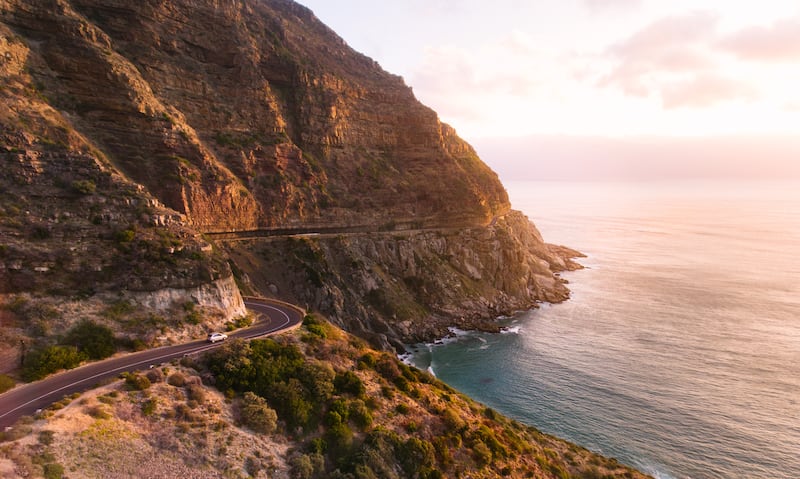
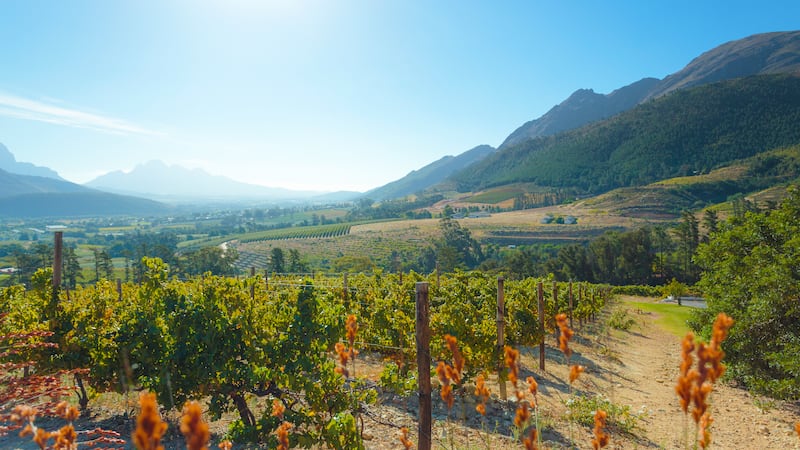
It’s worth the hour’s trek from the city centre, even if it feels sugar-coated. There’s a distinct discomfort as a white person served exclusively by people of colour. There was just one fully black-owned vineyard in Franschoek as of 2022, according to the New York Times. Keenly aware of my privilege, it feels all one can do is be gracious, tip generously and hope it gets to its intended destination.
If there’s a place that reveals privilege – and often lack thereof – it’s South Africa. For those fortunate enough to visit, there’s a version of South Africa forever inching towards Nelson Mandela’s vision. It’s both a privilege and a heartbreak to see it.




















